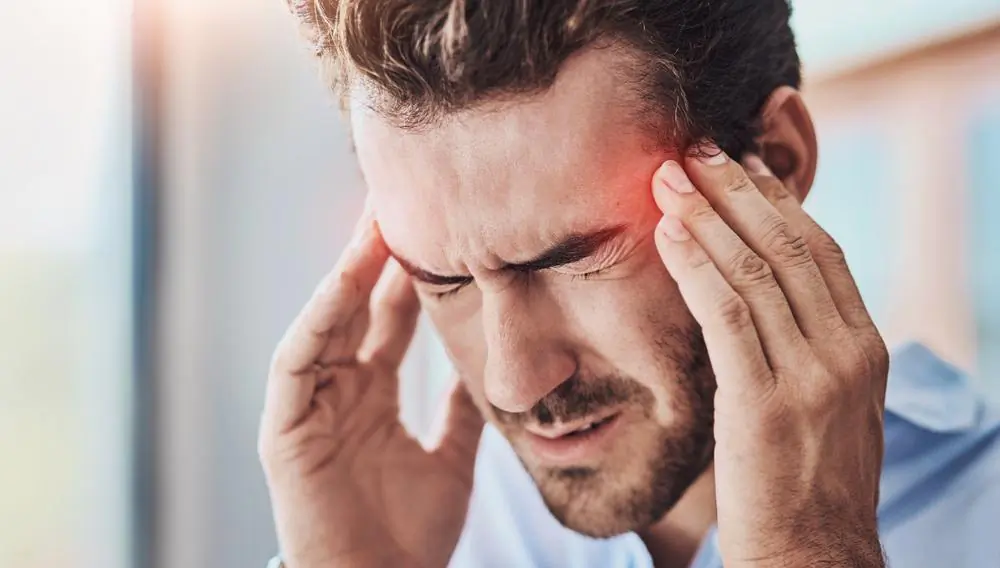Many people have frequent headaches due to modern life’s fast-paced and stressful nature. While some turn to painkillers for temporary relief, long-term use can result in unwanted side effects.
Traditional Chinese medicine (TCM) offers natural and effective solutions for managing headaches. For example, simple acupressure techniques provide quick relief. Additionally, herbal teas and soups can alleviate headaches and enhance overall health.
Mastering these methods can make a significant difference in critical moments, allowing you to provide quick relief for yourself and those around you.
5 Types of Headaches and Ways to Relieve Them
Headaches can be caused by a variety of factors. Knowing their cause can help pinpoint the solution to ease them:
1. Headaches Triggered by Stress
Overwhelmed by stress can sometimes trigger headaches. Research has shown a clear link between rising stress levels and an increase in headache frequency. For some people, the pain becomes so severe it feels as though their eyes are bulging, almost on the verge of falling out. Such overwhelming pain may lead to nausea, vomiting, and sensitivity to light and noise.
While many turn to painkillers for relief, gently massaging the Qiuxu acupoint (GB40) may offer a quicker and more natural way to relieve stress headaches.
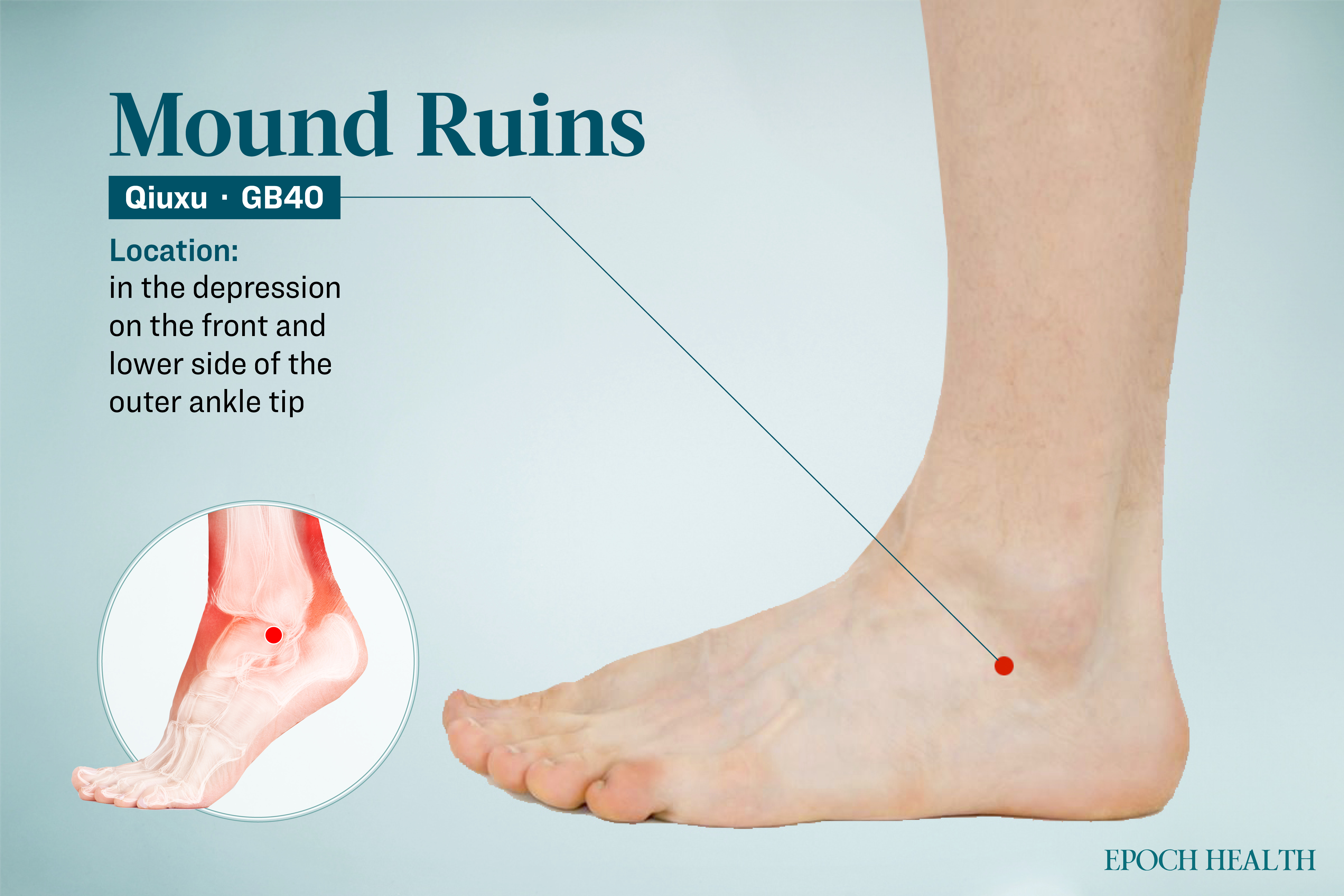
If the headache is on the left side, massage the Qiuxu acupoint on your right foot; if it is on the right side, massage the acupoint on your left foot. Press and hold for about three seconds to help alleviate the headache.
A clinical trial found that electroacupuncture stimulation at the Qiuxu acupoint may effectively treat migraines.
According to TCM, meridians are the channels through which energy flows in the human body. The internal organs are connected to the body’s surface through these meridians. Along the meridians are specific points known as acupoints, which possess unique functions. By stimulating the corresponding acupoints through techniques like acupuncture and massage, it is possible to treat diseases related to specific organs.
2. Headaches Caused by Poor Posture
Poor posture is a common trigger for headaches. For instance, spending long hours in front of a computer screen or tilting your head forward while looking at a smartphone can strain the neck muscles. This constant tension can lead to headaches.
When I consult with patients experiencing headaches, I often ask if they also suffer from neck pain. In many cases, neck pain is a contributing factor to the headache. Addressing the neck issue and improving blood circulation usually alleviates the headache naturally.
Two key acupoints may provide quick relief for this type of headache: the Chize acupoint (LU5) and the Zhuiti acupoint.
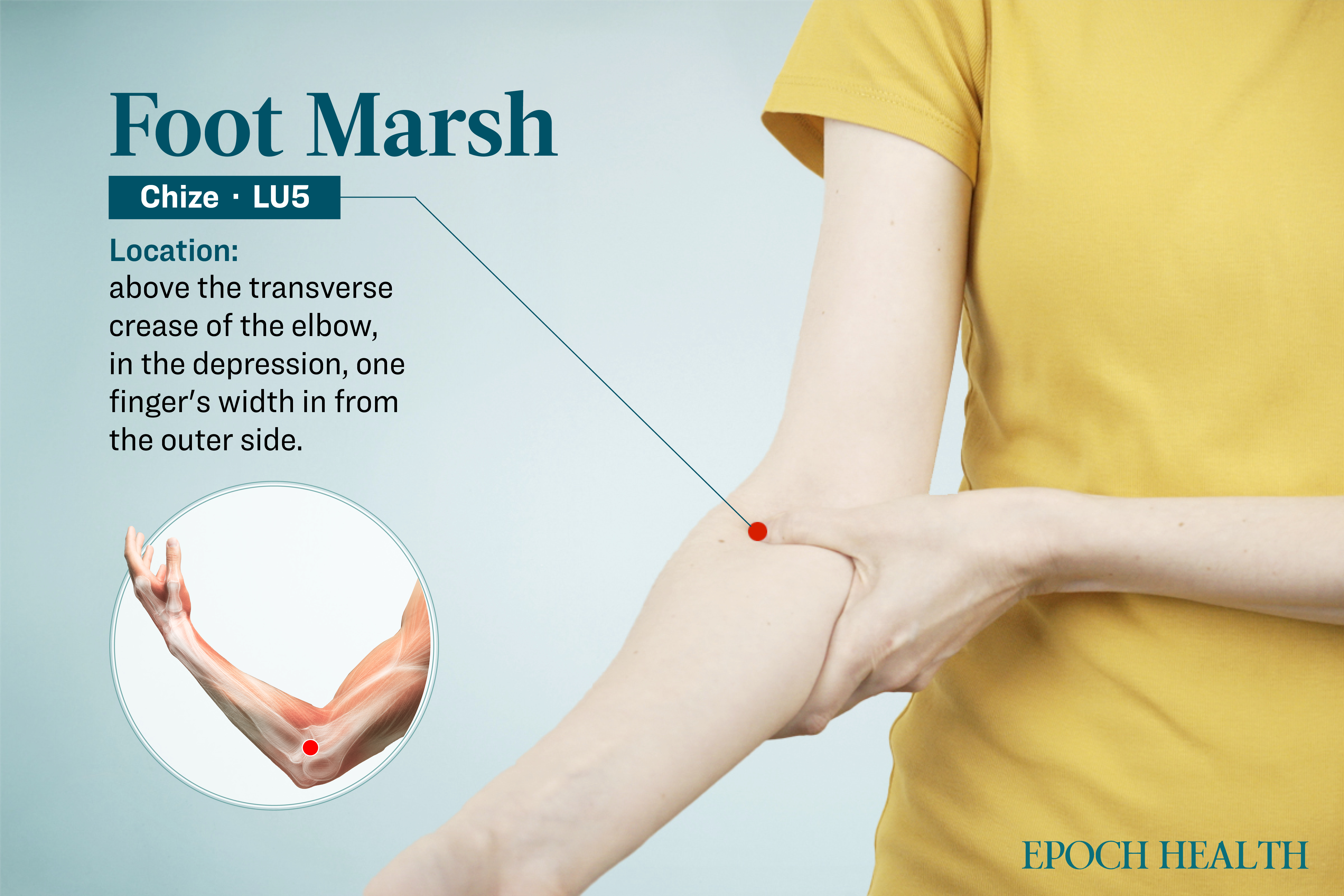
Gently pressing on the Chize acupoint may create a mild sore or tense sensation. While applying pressure, try moving the neck and shoulder on the same side. This can help reduce stiffness and relieve pain in the neck and shoulder area. As blood circulation improves and the muscles relax, the headache is likely to subside.
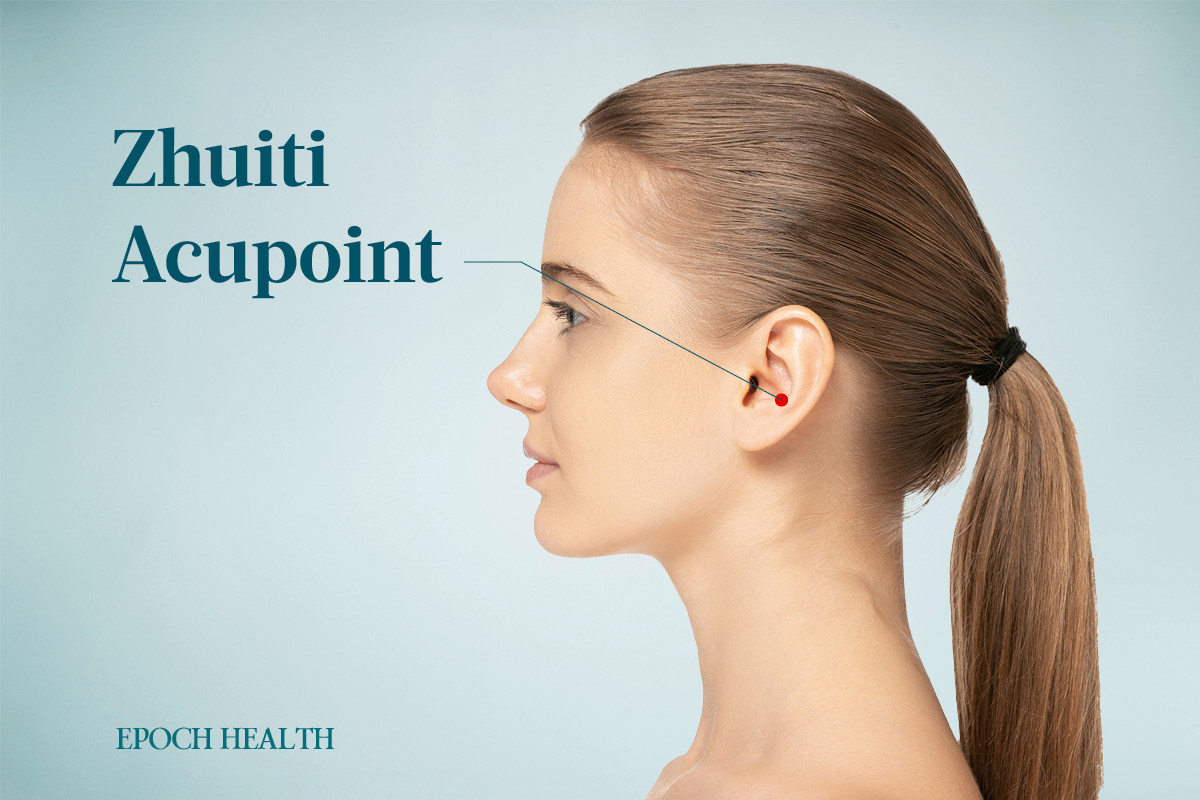
The Zhuiti acupoint, a relatively lesser-known point, is located on the ear at the tip of the anti-helix.
For those with neck stiffness or back pain, gently pressing this acupoint may cause a sore sensation. Stimulating the Zhuiti acupoint can help relieve neck stiffness and alleviate the headache.
3. ‘Brain Freeze’ Headaches
People who frequently eat or drink cold foods or beverages are more prone to headaches. According to TCM, cold foods and drinks can harm internal organs, particularly the spleen system, which plays a key role in fluid metabolism. When the spleen’s function is weakened, the body struggles to eliminate waste and toxins, causing them to accumulate. This buildup can result in various symptoms, including headaches, often accompanied by a heavy sensation in the head.
For these people, drinking room-temperature water daily between 3 p.m. and 7 p.m. is recommended to enhance fluid circulation and metabolism. This practice can effectively alleviate headaches triggered by cold foods or beverages.
4. Headaches Caused by Cold Exposure
Failing to dry your hair after washing it can cause intense headaches. Similarly, staying in an air-conditioned environment where cold air blows directly on your head or neck may also trigger headaches. According to TCM theory, environmental wind, cold, and dampness can invade the body, disrupting energy flow and blood circulation. Impaired circulation can, in turn, lead to headaches.
In such cases, pressing the Hegu acupoint (LI4) and the Lieque acupoint (LU7) can help quickly relieve the headache.
Ancient Chinese medical texts describe these two acupoints as particularly effective for treating conditions affecting the head and face.
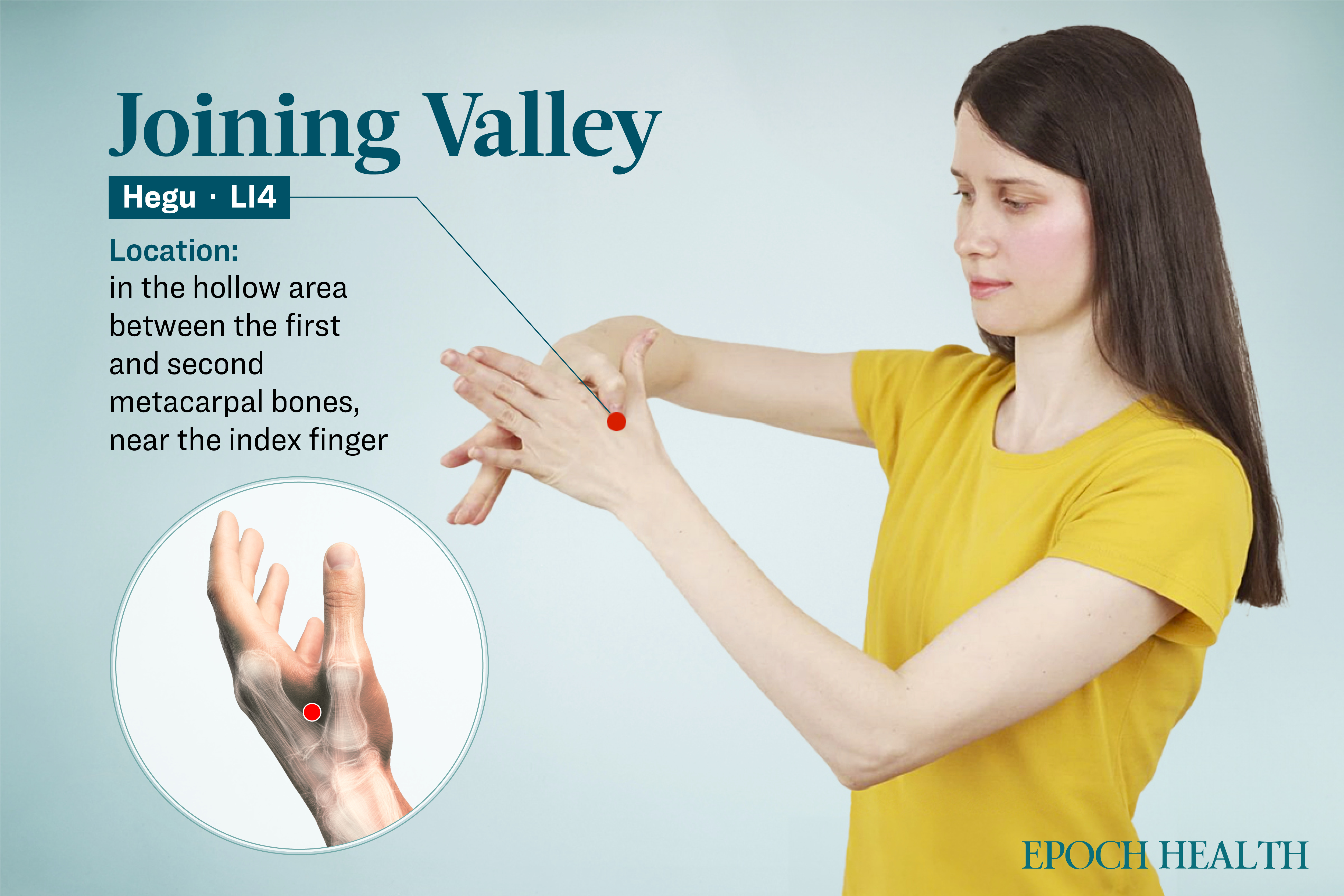
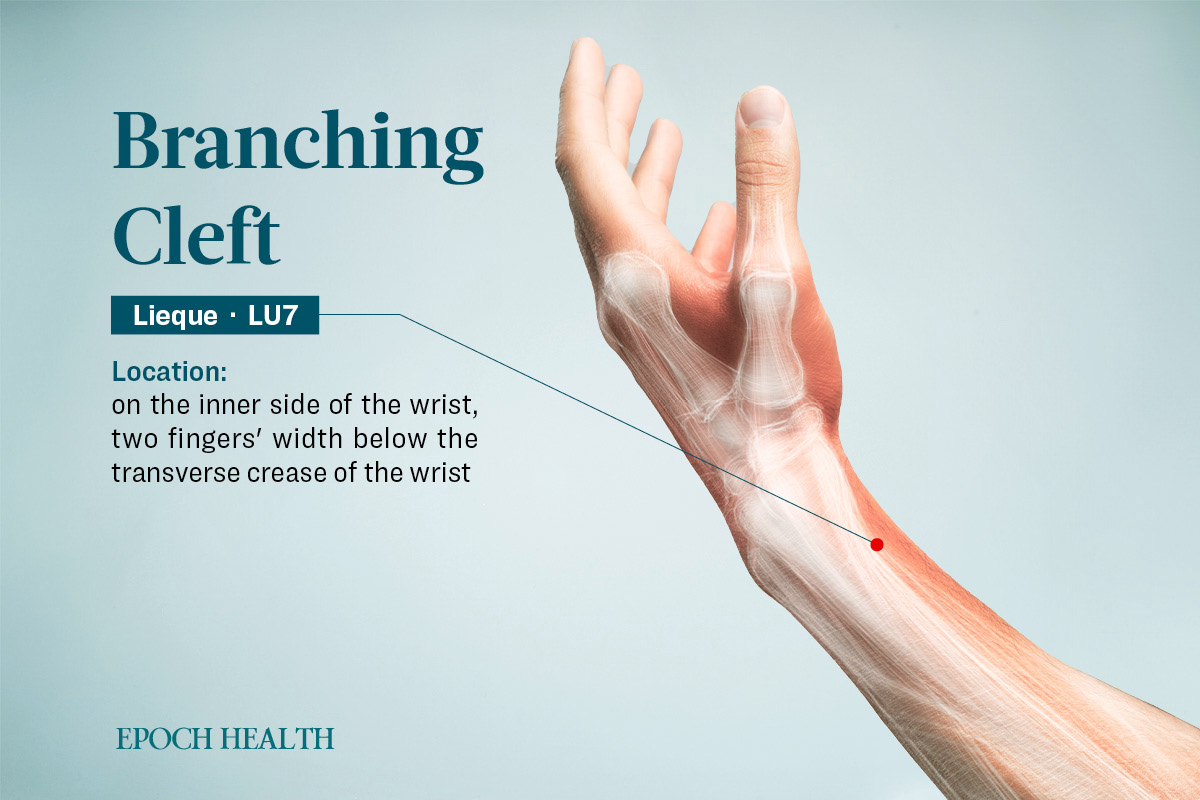
5. Headaches From Overexertion or Pre-Menstrual
Overexertion can cause symptoms such as headaches, dizziness, and fatigue. Some women may experience severe headaches, accompanied by nausea or vomiting, about a week before their menstrual cycle. These issues are often linked to problems with the spleen and stomach’s digestive and transport functions, which disrupt the supply of nutrients, energy, and blood throughout the body.
In such cases, foods like milkfish head soup can be highly beneficial for calming the mind, nourishing the brain, and relieving headaches.
Milkfish Head Soup
Ingredients
- 3 to 5 milkfish heads
- 7.05 ounces (200 grams) organic tofu
- 12 grams each of Gastrodia (tian ma), poria (fu ling), Codonopsis (dang shen), and chamomile (gan ju)
- 20 grams Uncaria (shuang gou teng)
- 8 cups (approximately 2 liters) of water
Preparation
Preparation
- Prepare the Broth: In a large pot, add the milkfish heads, tofu, Gastrodia, Poria, Codonopsis, Chamomile, and 8 cups of water.
- Cook: Bring the mixture to a boil, then reduce to a simmer. Let it cook for 1 to 1.5 hours, ensuring the fish heads are tender and the herbs are fully infused into the broth.
- Add Uncaria: Stir in the Uncaria during the last 5 minutes of cooking to preserve its properties.
- Serve: Mix well and serve the soup hot.
A meta-analysis found that gastrodin, the primary active component of Gastrodia, is effective and safe for treating migraines. It can reduce pain severity, lower the frequency of migraine attacks, and shorten their duration.
Red date ginger tea can also be beneficial. To prepare, steep ginger slices, brown sugar, and red dates in hot water, then add a touch of cinnamon. This soothing tea warms the body promotes blood circulation and relieves headaches.
Health Benefits of Foot Massage
If the entire head is in pain, TCM often employs a “treat the feet” approach for relief. The soles of the feet contain numerous acupoints that correspond to different parts of the body. Among them, the Yongquan acupoint (KI1) is known for its health-promoting benefits, including improving blood circulation. It is frequently used to address symptoms such as headaches, dizziness, and insomnia.
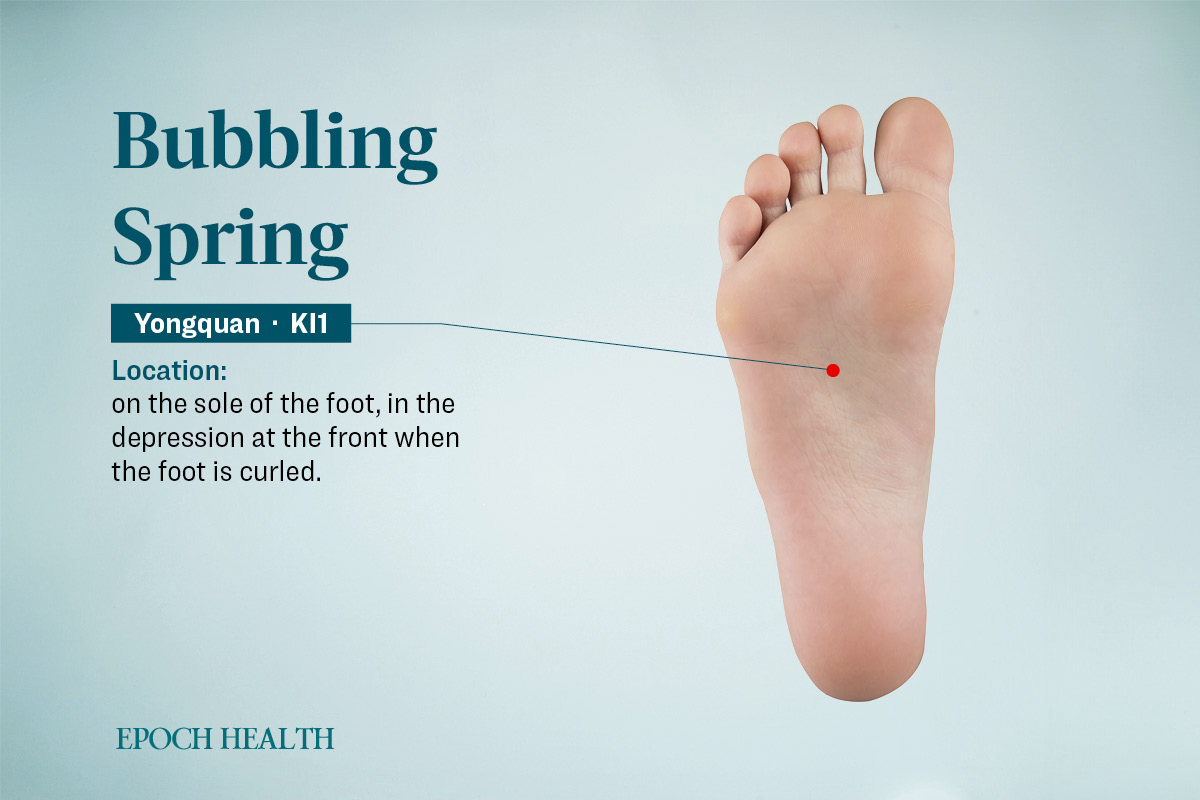
Regularly massaging the Yongquan acupoint or walking on a reflexology path can be beneficial. The pebbles on these paths stimulate the Yongquan acupoint and other acupoints on the soles of your feet, helping to relieve headaches and promote overall health.
Additionally, staying relaxed, practicing kindness and patience, and maintaining a positive mindset can help prevent headaches caused by stress and other factors.
Note: Some herbs mentioned in this article may be unfamiliar but are generally available in health and Asian grocery stores. Treatment methods may vary depending on the individual, so please consult a health care professional for a specific treatment plan.
Views expressed in this article are the opinions of the author and do not necessarily reflect the views of The Epoch Times. Epoch Health welcomes professional discussion and friendly debate. To submit an opinion piece, please follow these guidelines and submit through our form here.
